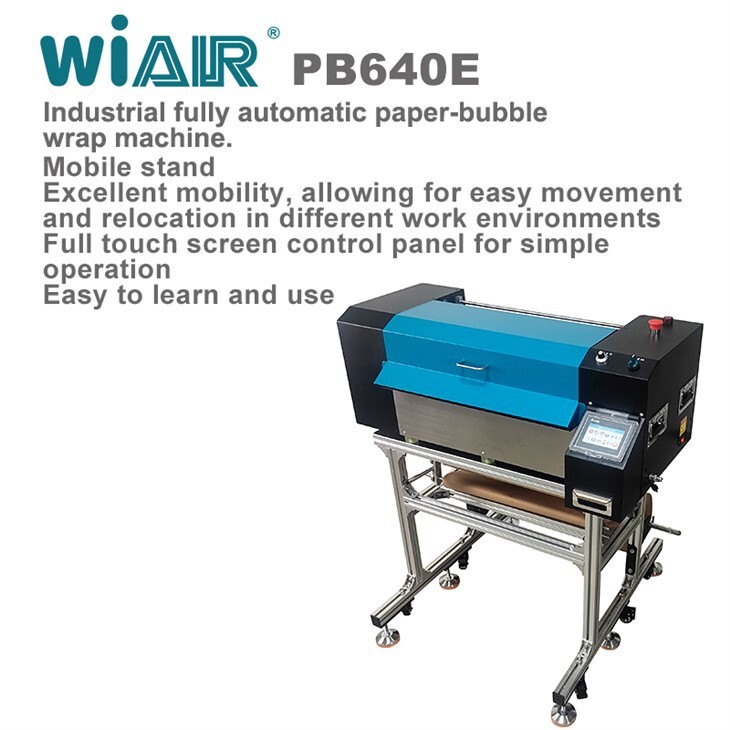
ADD: No.540, 2/F, Lane 500, XinNongHe Road, Song Jiang District, Shanghai, China
TEL: +86-21-65667541
MOB: +86 17717267676
E-MAIL: marketing@dsb.com.cn

With the quickly growth of e-commerce and the logistics industry, the choice of packaging materials has become a crucial decision in business operations. In this context, the cushioning effectiveness of paper bubble and bubble wrap, two common packaging materials, has garnered significant attention. This article will explore their cushioning performance, focusing on the differences in protective efficacy.

Paper Bubble: Easily to use, Outstanding Cushioning Performance
Bubble paper, also known as Bubble Wrap, is a lightweight packaging material made of kraft paper. It excels in protecting goods from damage during transportation and handling, making it suitable for various shapes and sizes of products. Taking cosmetics products as an example, bubble paper is often effective in cushioning vibrations and impacts, reducing the rate of damage. As a result, it finds extensive use in the packaging of the cosmetics industry.
Real-life Example: A manufacturer of cosmetics accessories uses bubble paper to package their products, significantly reducing damage rates during transportation. This not only enhances customer satisfaction but also reduces returns and compensation costs.
Bubble Wrap: Lightweight, Versatile Packaging Choice
Bubble wrap is another popular packaging material composed of a thin film and air-filled bubbles. Its lightweight nature makes it highly popular in the packaging of bulk commodities such as clothing, books, and small household items. The bubble layer of bubble wrap effectively cushions against shocks and vibrations, providing excellent protective performance.
Cushioning Performance Comparison
Although both bubble paper and bubble wrap exhibit excellent cushioning performance, they differ in some aspects. Bubble paper, with its thicker foam layer, boasts superior energy absorption, making it suitable for protecting heavy or fragile items. In contrast, bubble wrap is thinner and suitable for packaging lightweight and medium-sized items, albeit requiring more layers to achieve protective performance similar to bubble paper.
Protective Comparison: Bubble Wrap vs Paper Bubble
For instance, an electronics manufacturer recently conducted a test comparing products packaged with bubble paper and bubble wrap. They packed identical smartphone models separately with bubble paper and bubble wrap, followed by drop tests. The results clearly indicated that smartphones packaged with bubble paper outperformed those in bubble wrap in drop tests, showcasing the advantage of bubble paper in safeguarding products from damage.
In conclusion, both bubble paper and bubble wrap are outstanding packaging materials, with their cushioning effectiveness depending on the nature of the goods and packaging requirements. Businesses need to consider factors such as protective performance, cost, and sustainability when selecting the most suitable packaging material for their products. In packaging decisions, regular assessments of market trends and technological innovations are also crucial to ensure products stand out in a competitive market.
Related News
- Green Packaging, Starting With Paper
- The Future Star Of Eco-friendly Packaging | Honeycomb Paper
- From Design To Recycling, Building A Green Circular Economy
- Farewell To Plastic Cushioning, Here Comes Paper-Bubble
- WiAIR's Mission | Protect Products, Protect The Earth
- Honeycomb Paper:Eco-Friendly, Efficient And Stylish - All In One
- How To Choose A Quality Honeycomb Paper Sleeve Forming Machine?
- From 2D To 3D Eco-friendly Cushion Packaging,are We On Trend?
- Your Product Needs Paper Cushion Packaging For Protection!
- Unveiling The Secrets Of Honeycomb Paper Sleeves Production | Efficient WiAIR-AM900
- Honeycomb Paper Sleeve Forming Machine, Efficient Production, Protecting Every Piece Of Green On The Earth
- Honeycomb Paper Sleeve VS Honeycomb Paper, A New Choice For Packaging
- Environmental Protection Packaging Has Become Explosive
- Start Adding Green To The Planet With The Honeycomb Mat Machine!
- Really? Paper As Protective Packaging Material?
- A Powerful Tool For Offices And Small Warehouses—WiAIR-PB340S Bubble Paper Machine
- Bubble Paper, Honeycomb Paper, Honeycomb Paper Sleeves - The Perfect Alternative To Plastic Packaging
- How Are Ceramic Products Safely Transported? All-round Protection Of Pressure Bubble Paper
- The Terminator Of Bubble Wrap, Why Is Paper Bubble So Popular?
- New Packaging Material Bubble Paper Provides Soft Protection For Products






